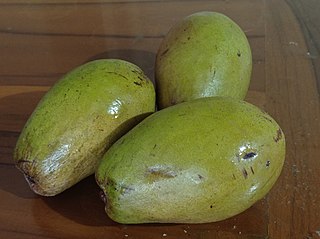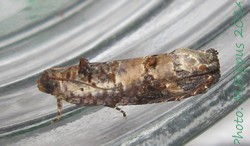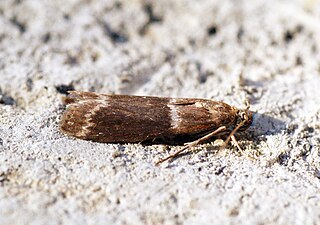
Sumatra is one of the Sunda Islands of western Indonesia. It is the largest island that is fully within Indonesian territory, as well as the sixth-largest island in the world at 475,807.63 km2 (182,812 mi.2), including adjacent islands such as the Simeulue, Nias, Mentawai, Enggano, Riau Islands, Bangka Belitung and Krakatoa archipelago.

A mango is an edible stone fruit produced by the tropical tree Mangifera indica. It originated from the region between northwestern Myanmar, Bangladesh, and northeastern India. M. indica has been cultivated in South and Southeast Asia since ancient times resulting in two types of modern mango cultivars: the "Indian type" and the "Southeast Asian type". Other species in the genus Mangifera also produce edible fruits that are also called "mangoes", the majority of which are found in the Malesian ecoregion.

Amorphophallus is a large genus of some 200 tropical and subtropical tuberous herbaceous plants from the Arum family (Araceae), native to Asia, Africa, Australia and various oceanic islands. A few species are edible as "famine foods" after careful preparation to remove irritating chemicals. The genus includes the Titan arum of Indonesia, which has the largest inflorescence of any plant in the genus, and is also known as the 'corpse flower' for the pungent odour it produces during its flowering period, which can take up through seven years of growth before it occurs.

Breynia is a plant genus in the family Phyllanthaceae, first described in 1776. It is native to Southeast Asia, China, the Indian Subcontinent, Papuasia, Australia, and the island of Réunion.

Mangifera caesia is a species of flowering plant in the cashew family, Anacardiaceae. Known in English as jack or white mango, among other names. It belongs to the same genus as the mango and is widely cultivated in areas of Indonesia, Malaysia, Singapore, Brunei, Papua New Guinea and the Philippines.

Cryptoblabes gnidiella, the honeydew moth or Christmasberry moth, is a moth of the family Pyralidae. It is natively found around the Mediterranean Sea but occurs also in Africa, the Oriental & Australasian region and is an introduced species in South America and Middle America.

Mangifera indica, commonly known as mango, is a species of flowering plant in the family Anacardiaceae. It is a large fruit tree, capable of growing to a height of 30 metres. There are two distinct genetic populations in modern mangoes – the "Indian type" and the "Southeast Asian type".

Dudua aprobola, the mango flower webworm or litchi leaf roller, is a moth of the family Tortricidae. The species was first described by Edward Meyrick in 1886. It is a pest on several economically important crops.

Cryptoblabes is a genus of small moths belonging to the snout moth family (Pyralidae). They are the type genus of the Cryptoblabini tribe of the huge snout moth subfamily Phycitinae. At least one representative of this genus nowadays occurs in many parts of the world, though this is the result of accidental introductions by humans; most species of Cryptoblabes are fairly restricted in range.
Cryptoblabes adoceta, the sorghum head moth, is a species of snout moth in the genus Cryptoblabes. It was described by Turner in 1904. It is found in the Northern Territory and Queensland in Australia.
Cryptoblabes albocostalis is a species of snout moth in the genus Cryptoblabes. It was described by Thomas Pennington Lucas in 1892 and is known from Australia.
Cryptoblabes alphitias is a species of snout moth in the genus Cryptoblabes. It was described by Alfred Jefferis Turner in 1913. It is found in Australia. The holotype (female) was collected in Kuranda, Queensland.

Cryptoblabes bistriga is a species of snout moth in the genus Cryptoblabes. It was described by Adrian Hardy Haworth in 1811. It is found in most of Europe, except Portugal, parts of the Balkan Peninsula and Ukraine.
Cryptoblabes euraphella is a species of snout moth in the genus Cryptoblabes. It was described by Edward Meyrick in 1879, and is known from Australia.
Cryptoblabes poliella is a species of snout moth in the genus Cryptoblabes. It was described by Oswald Bertram Lower in 1905, and is known from Australia.
Cryptoblabes myosticta is a species of snout moth in the genus Cryptoblabes. It was described by George Hampson in 1903. It is found in India.
Cryptoblabes proleucella is a species of moth of the family Pyralidae described by George Hampson in 1896. It is found in India, the Malay Archipelago, Samoa and Taiwan.
Cryptoblabes angustipennella, the earhead caterpillar, is a moth of the family Pyralidae. It was first described by Émile Louis Ragonot in 1888. It is found in India and Sri Lanka. The caterpillar is a pest of Eleusine coracana.
Nepenthes putaiguneung is a tropical pitcher plant endemic to highlands of the island of Sumatra in Indonesia. Nepenthes putaiguneung closely resembles in its morphology to N. singalana, however, it differs from the latter with its narrowly spatulate leaves, the upper pitchers with finely lobed peristome that lacks teeth on inner edge, basal crest of the pitcher lid that has a short, tooth-like appendage, the lower pitcher's lid glands that is confined to the midline, and the minutely short bracteole on the pedicel of male flowers. This species also resembles N. mikei but differs by the shape of the leaves, the shape of the lower pitchers, the short, dense ribs on the peristome of the lower pitcher, the prominent grandular crest on the base of the lid of both pitchers, the clustered glands on the midrib of the lid of the lower pitcher, and the minutely short bracteole on the pedicel of male flowers.








